How to Fertilize Asparagus in 2024: Best Times & Methods
- April 10, 2024
- 0 comment
As we step into 2024, the methods and timing for fertilizing asparagus remain pivotal for gardeners aiming to achieve a plentiful harvest. With advancements in gardening techniques and a deeper understanding of asparagus’s nutritional needs, now is the perfect time to refine your approach to fertilizing this nutritious vegetable. Whether you’re a seasoned asparagus grower or trying your hand at cultivating these spears for the first time, our comprehensive guide is tailored to help you navigate through the nuances of asparagus care with ease.

In this guide, you’ll discover the latest recommendations for fertilizing asparagus, from choosing the right type of fertilizer to understanding the best application times throughout the growing season. Our aim is to arm you with knowledge and techniques that will not only enhance the vigor and yield of your asparagus crop but also ensure sustainability and health of your garden soil. Join us as we delve into expert tips and actionable insights designed to maximize your asparagus production in 2024 and beyond.
Table of Contents
- Understanding Asparagus Nutritional Needs
- Preparing Your Asparagus Bed for Fertilization
- Optimizing Planting Layout for Medium to High-Density Farming
- Choosing the Right Fertilizer for Your Asparagus
- Fertilization Timing: When to Fertilize Asparagus
- Step-by-Step Guides on How to Fertilize Asparagus
- Pruning Techniques for Healthy Asparagus
- Special Considerations for 2024
- Common Fertilization Mistakes to Avoid
- Conclusion
- FAQs
Understanding Asparagus Nutritional Needs
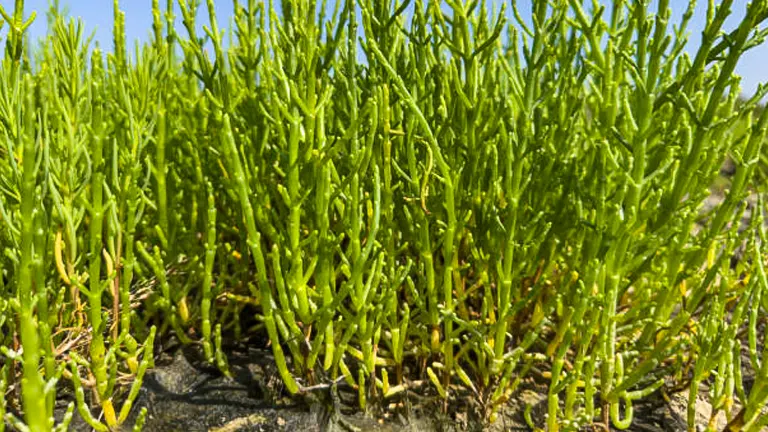
Asparagus, with its deep root system and perennial lifecycle, demands a nuanced approach to nutrition. During its early growth stages in spring, it requires a balanced supply of nutrients to support both spear production and the development of a robust root system for future seasons.
Essential Macronutrients
- Nitrogen (N): Crucial for the development of spears and giving asparagus its vibrant green color, nitrogen plays a central role in the synthesis of proteins within the plant. An application range of approximately 50-70 lbs. per acre annually is recommended to promote healthy growth and coloration.
- Phosphorus (P): Important for root development, phosphorus is critical in the plant’s early growth stages. Applying around 50-70 lbs. per acre can enhance the root system’s strength and durability, preparing the plant for a successful growth period.
- Potassium (K): Key to the plant’s overall well-being, potassium aids in water regulation and disease resistance. An annual application of 50-70 lbs. per acre is advised to support these essential processes.
Significance of Micronutrients
The role of micronutrients, though required in smaller quantities, is equally critical for the balanced growth and health of asparagus. These include:
- Magnesium (Mg): Supports chlorophyll production, essential for photosynthesis.
- Calcium (Ca): Vital for cell wall structure and stability.
- Sulfur (S): Needed for protein synthesis and enzyme activities.
Understanding these nutritional needs allows for a more informed and effective fertilization strategy, laying the groundwork for a flourishing asparagus garden.
Nutrient Application Timing and Methods
Early Spring: Prior to spear emergence, apply a balanced fertilizer to kickstart growth. This early boost prepares the plant for robust spear and root development.
Post-Harvest: After the final harvest, applying fertilizer supports the plant in storing energy for the next season. This stage is crucial for ensuring the longevity and productivity of the asparagus plant.
Innovative Table of Nutritional Values
| Nutrient | Recommended Quantity (lbs. per acre) | Growth Stage Benefited | Role in Asparagus Growth |
|---|---|---|---|
| Nitrogen (N) | 50-70 | Early Spring, Post-Harvest | Spear growth, green coloration, protein synthesis |
| Phosphorus (P) | 50-70 | Early Spring | Root development and strength |
| Potassium (K) | 50-70 | Throughout Growing Season | Overall health, water regulation, disease resistance |
| Magnesium (Mg) | 20-30 | Pre-Emergence of Spears | Chlorophyll production, photosynthesis |
| Calcium (Ca) | 20-30 | Early Spring | Cell wall structure, stability |
| Sulfur (S) | 10-20 | Early Spring | Protein synthesis, enzyme activities |
This table provides a snapshot of the core nutrients required for asparagus cultivation, tailored to support its growth phases from spear emergence to post-harvest rejuvenation. For optimal results, adjustments may be necessary based on soil tests and specific environmental conditions.
Preparing Your Asparagus Bed for Fertilization
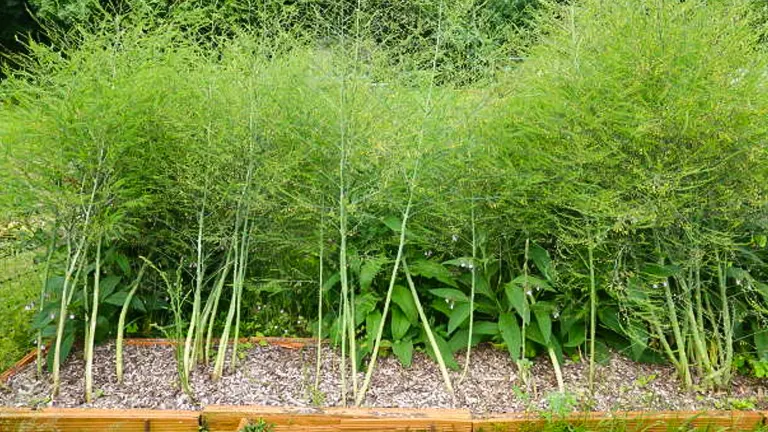
- Conduct a Detailed Soil Test: Before making any amendments, obtain a detailed analysis of your soil. This test will measure pH levels, macro, and micronutrient availability, and the presence of organic matter. Asparagus plants are particularly sensitive to the soil’s nutrient makeup and pH level.
- Adjust Soil pH: Asparagus prefers a slightly alkaline environment. If your soil test indicates a pH outside of the 6.5 to 7.5 range, consider adding lime to raise the pH or sulfur to lower it. The quantity needed can be precisely calculated based on the current pH and the soil type (clay, loam, sand).
- Enhance Soil Structure and Fertility: Incorporating organic matter such as compost or well-rotted manure is beneficial. This practice not only adds essential nutrients but also improves soil aeration and water retention, making nutrients more accessible to the plant’s deep roots.
- Plan for Nutrient Amendments: Based on the soil test results, you may need to add specific nutrients. For asparagus, ensuring a balanced availability of nitrogen (N), phosphorus (P), potassium (K), and important micronutrients is key to robust growth.
- Implement Crop Rotation Practices: To prevent soil exhaustion and reduce the risk of disease, rotate your asparagus with complementary crops that do not deplete the same nutrients from the soil.
Soil Preparation and Nutrient Management
| Process | Action | Objective | Scientific Insight |
|---|---|---|---|
| Soil Testing | Obtain a soil test kit or service | Determine pH and nutrient levels | Ideal pH for asparagus: 6.5-7.5 |
| pH Adjustment | Add lime or sulfur based on test results | Adjust soil pH to ideal range | 1 ton of lime per acre raises pH by about 1 point in loamy soil |
| Organic Matter Incorporation | Mix in compost or manure | Improve soil structure and fertility | Organic matter should make up 5-10% of soil composition |
| Nutrient Amendment | Apply specific fertilizers | Address nutrient deficiencies | N:P:K ratio of 10-10-10 or similar, based on soil needs |
| Crop Rotation | Rotate with non-competing crops | Preserve soil health and reduce pest risk | Follow a 3-4 year rotation cycle |
Optimizing Planting Layout for Medium to High-Density Farming
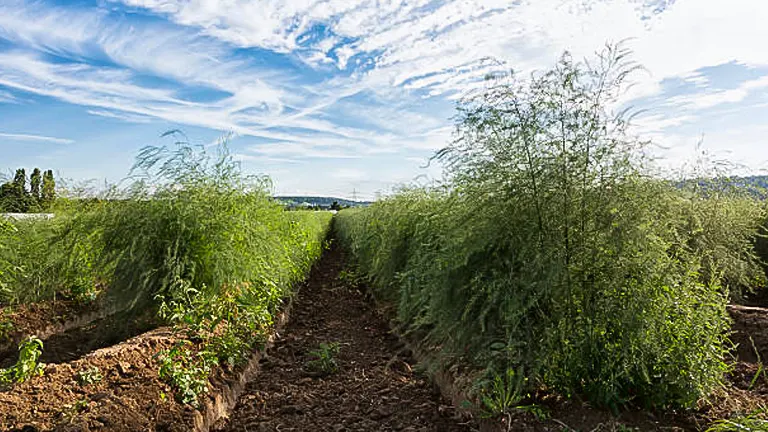
- Intensive Row Spacing: While traditional guidelines propose a spacing of 12 to 18 inches between asparagus crowns with 4 to 5 feet between rows, adopting an intensive planting strategy involves reducing row spacing to 2 to 3 feet. This method is contingent upon superior soil fertility and optimal water management to mitigate the risk of competition and stress.
- Vertical Farming Techniques: Incorporating vertical farming structures can dramatically increase the spatial efficiency of high-density asparagus farming. By training asparagus to grow in controlled vertical systems, you can maximize yield per square foot. This method requires advanced infrastructure and a controlled environment to manage light, temperature, and humidity.
- Precision Agriculture: Utilizing technology such as soil moisture sensors, drone imagery, and satellite mapping can help in precisely determining the optimal layout and management practices for high-density asparagus cultivation. Precision agriculture tools assist in making informed decisions regarding planting density, irrigation, and fertilizer application.
- Soil Fertility Management: In high-density settings, maintaining soil fertility is paramount. Implementing a tailored fertilization plan based on soil tests ensures that plants receive the necessary nutrients without promoting excessive competition.
Planting Layout and Management
| Strategy | Description | Benefits | Considerations |
|---|---|---|---|
| Intensive Row Spacing | Reducing space between rows to 2-3 feet | Higher yields per acre | Requires enhanced soil fertility and irrigation management |
| Vertical Farming | Utilizing vertical structures for asparagus growth | Maximizes spatial efficiency | Needs advanced infrastructure; control over environmental factors |
| Precision Agriculture | Applying technology for optimal layout decisions | Increases efficiency and yield | Investment in technology; data interpretation skills required |
| Soil Fertility Management | Tailored fertilization based on soil testing | Ensures plant health in dense layouts | Regular soil testing; balanced nutrient application needed |
Choosing the Right Fertilizer for Your Asparagus
| Aspect | Organic Fertilizers | Synthetic Fertilizers |
|---|---|---|
| Composition | Derived from natural materials (manure, bone meal, etc.) | Man-made chemicals |
| Nutrient Release | Slow and steady, improving long-term soil health | Quick and immediate, suitable for rapid growth phases |
| Soil Impact | Enhances soil structure and microbial activity | May lead to soil degradation with excessive use |
| Application | Broad application times, less risk of overuse | Precise timing needed to avoid plant damage |
| Best For | Sustainable practices, improving soil health | Specific growth stages requiring immediate nutrient boost |
When nurturing asparagus, recognizing the distinct advantages and considerations of both organic and synthetic fertilizers plays a crucial role in your gardening strategy.
- Organic Fertilizers: Embodying a holistic approach to gardening, organic fertilizers offer nutrients in a form that mirrors natural soil processes. They break down slowly, providing a sustained nutrient release that encourages robust root development and enriches the soil with organic matter, fostering a vibrant microbial ecosystem. This method not only feeds your asparagus but also invests in the long-term fertility and structure of your garden soil.
- Synthetic Fertilizers: For gardeners focused on precision and timing, synthetic fertilizers provide a controlled, immediate source of nutrients to asparagus plants, especially beneficial during critical growth stages. These fertilizers come with a higher concentration of essential nutrients, allowing for targeted applications according to the plants’ immediate needs. However, this approach requires careful management to prevent potential nutrient runoff and to ensure that the fast-acting benefits do not compromise the soil’s overall health.
Balancing N-P-K Ratios for Optimal Growth
The choice of fertilizer is also influenced by the specific nutrient needs of asparagus plants. A balanced N-P-K ratio is crucial, with a particular emphasis on phosphorus for root development. The selection process should consider the plant’s current growth phase, soil composition, and the gardener’s long-term soil management goals. Opting for a fertilizer that’s labeled as suitable for vegetables or specifically for asparagus ensures that you’re providing your plants with the nutrients they require without disrupting the natural balance of your soil ecosystem.
Fertilization Timing: When to Fertilize Asparagus
Early Spring Awakening
- Optimal Timing: Target the final weeks of March to early April, depending on your local climate. The key is to apply fertilizer just as the soil thaws and becomes workable, ideally before the asparagus spears break through the soil surface.
- Purpose: This initial application re-energizes the asparagus after winter dormancy, providing a boost for the emerging spears. It replenishes essential nutrients that were depleted during the dormant period, setting the stage for vigorous growth.
- Nutrient Focus: A balanced 10-10-10 N-P-K fertilizer is typically recommended. The nitrogen component supports rapid green growth, while phosphorus and potassium fortify the plant’s root system and overall health.
Post-Harvest Nutrient Support
- Optimal Timing: Schedule this for late June to early July, after the harvesting period has concluded. This timing allows the asparagus to absorb nutrients as it shifts energy towards developing strong ferns and replenishing its root reserves.
- Purpose: Post-harvest fertilization is crucial for building up the plant’s energy stores for the following year. It strengthens the ferns, which are vital for photosynthesis and energy storage, ensuring a robust start for the next growing season.
- Nutrient Focus: Consider a formulation with slightly higher potassium content at this stage (e.g., 8-24-24 N-P-K). Potassium improves the plant’s resilience against diseases and environmental stress, while nitrogen and phosphorus continue to support healthy foliage and root development.
Environmental Considerations for Fertilization
- Soil Temperature: Aim for soil temperatures consistently above 50°F (10°C). This threshold ensures active nutrient uptake, typically occurring from late March through April in many growing zones.
- Weather Patterns: Applying fertilizer just before a period of mild weather or light rainfall can enhance nutrient dissolution and soil penetration. This makes the nutrients more readily available to the plant’s root system.
Supplementary Tips for Optimal Results
- Soil Testing: An early March soil test can offer invaluable insights into your garden’s specific needs, allowing you to customize the nutrient mix and address any deficiencies before the growing season begins.
- Organic Alternatives: For those committed to organic gardening, applying well-rotted manure or a seaweed-based fertilizer after the last harvest supports soil health and provides a gentle nutrient boost without the risk of chemical run-off.
Table: Asparagus Fertilization Schedule
| Fertilization Phase | Suggested Dates | Key Nutrients | Objective |
|---|---|---|---|
| Early Spring Application | Late March – Early April | Balanced 10-10-10 N-P-K | Stimulate spear growth, replenish soil nutrients |
| Post-Harvest Reinforcement | Late June – Early July | Higher K (e.g., 8-24-24 N-P-K) | Enhance fern strength, prepare for dormancy |
Step-by-Step Guides on How to Fertilize Asparagus
Step 1: Pre-Season Soil Testing
- Timing: Late winter or early spring, before new growth begins.
- Action: Use a soil test kit to assess pH and nutrient levels. Asparagus prefers slightly alkaline soil, with a pH between 6.5 and 7.5.
- Purpose: Identify any deficiencies or imbalances in nutrients and adjust your fertilization plan accordingly.
Step 2: Preparing the Asparagus Bed
- Timing: Early spring, as soon as the soil is workable.
- Action: Clear the asparagus bed of any weeds or debris. If you’re amending the soil pH based on your soil test, do so at this time. Lime can raise pH, while sulfur can lower it.
- Purpose: Ensure the soil is ready for the upcoming growing season and conducive to nutrient uptake.
Step 3: Initial Fertilization
- Timing: Just before the spears emerge, typically in late March to early April.
- Action: Apply a balanced 10-10-10 N-P-K fertilizer at the rate of about 1 pound per 100 square feet of bed, or according to the soil test recommendations and product instructions.
- Purpose: Provide essential nutrients to support initial spear growth and development.
Step 4: Watering After Fertilization
- Timing: Immediately after applying fertilizer.
- Action: Water the fertilized area lightly but thoroughly to help dissolve the fertilizer and carry the nutrients into the soil.
- Purpose: Ensure that the nutrients are readily available to the plant roots and prevent fertilizer burn.
Step 5: Mulching
- Timing: After fertilization and watering.
- Action: Apply a layer of organic mulch, such as straw or compost, around the plants.
- Purpose: Help retain soil moisture, control weeds, and gradually add nutrients as the mulch breaks down.
Step 6: Mid-Season Fertilization
- Timing: After the harvest season ends, typically in late June to early July.
- Action: Apply a high-potassium fertilizer (such as an 8-24-24 N-P-K ratio) to promote strong fern development, which is crucial for energy storage for next year’s growth.
- Purpose: Strengthen the asparagus plants for the rest of the growing season and prepare them for dormancy.
Step 7: Additional Watering
- Timing: Throughout the growing season, especially after fertilization.
- Action: Maintain consistent moisture, especially during dry periods, without overwatering.
- Purpose: Support nutrient uptake and overall plant health.
Step 8: Post-Season Soil Maintenance
- Timing: Late fall, after ferns have yellowed and died back.
- Action: Cut back dead ferns to ground level and apply a light layer of compost or manure to the bed.
- Purpose: Add nutrients back into the soil and reduce the risk of pest and disease issues the following season.
Step 9: Record Keeping
- Action: Keep a record of fertilization dates, amounts, and any soil amendments made.
- Purpose: Track the health and productivity of your asparagus bed over time, allowing for adjustments in future seasons based on observed results.
Pruning Techniques for Healthy Asparagus
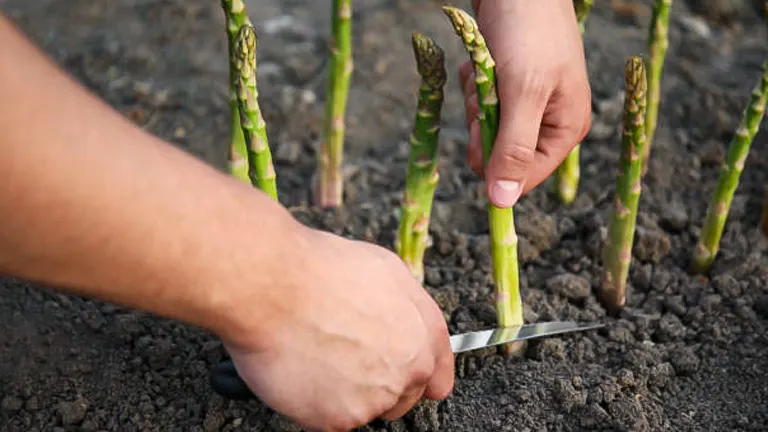
Pruning, or the selective removal of parts of a plant, plays a crucial role in asparagus care, especially when it comes to managing the ferny growth after the harvest period. As the season progresses, these ferns photosynthesize, strengthening the root system for the next year’s growth. However, proper pruning can prevent disease and pest infestations.
- Post-Harvest Pruning: After the final harvest, allow the ferns to grow; this is crucial for nutrient accumulation. In late autumn, once the ferns have yellowed and died back, cut them to ground level. This helps prevent overwintering pests and diseases.
- Disease Management: If any part of the plant shows signs of disease during the growing season, it’s vital to remove and destroy these parts immediately. Always use clean, sharp tools to make cuts to prevent the spread of disease.
Special Considerations for 2024
As we move into 2024, staying abreast of the latest advancements and recommendations in asparagus cultivation is essential. Climate change continues to impact gardening schedules and practices, making adaptability a key trait for successful gardeners.
- Adapting to Climate Change: Observe and adjust fertilization and watering schedules based on the current year’s weather patterns. Drier conditions may necessitate more frequent watering after fertilization, while unusually warm winters may shift the ideal timing for initial fertilization.
- Sustainable Practices: Look for fertilizers that not only meet your asparagus’s nutritional needs but also contribute to the health of the soil and the broader environment. Organic options, while slower to release nutrients, can improve soil health over time and reduce the garden’s carbon footprint.
Common Fertilization Mistakes to Avoid
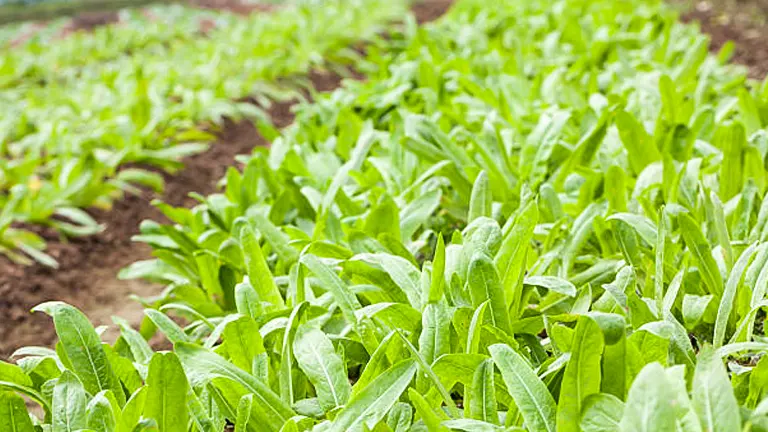
Even with the best intentions, certain fertilization practices can hinder rather than help your asparagus crop. Awareness of these common pitfalls can guide gardeners toward more effective care strategies.
- Over-Fertilization: More is not always better. Excessive fertilizer can lead to salt buildup in the soil, which can damage the asparagus roots and reduce water uptake, leading to poor growth and lower yields.
- Improper Timing: Fertilizing too late in the season can stimulate new growth that won’t survive the winter, weakening the plants. Ensure that your fertilization schedule aligns with the plant’s natural growth cycle.
- Neglecting Soil Health: Fertilization is just one part of a holistic garden management strategy. Regular soil tests, proper irrigation, and organic matter incorporation are crucial to maintaining soil health and ensuring that fertilizers can do their job effectively.
Related Post
- How to Fertilize a Mango Tree Effectively: Tips and Tricks for Healthy Growth
- How to Fertilize Apple Trees: Essential Tips for a Bountiful Harvest
- How to Fertilize Lemon Trees: Secrets for Thriving Citrus
- How to Fertilize Avocado Tree: A Step-by-Step Guide for Lush Growth
Conclusion
Fertilizing asparagus requires a nuanced understanding of the plant’s lifecycle, nutritional needs, and the environmental conditions of your garden. By preparing your soil based on test results, choosing the right fertilizer, and applying it at optimal times with the correct methods, you can significantly improve the health and yield of your asparagus plants. Remember, pruning plays a vital role in maintaining plant health, and adapting your practices to meet the challenges of changing climate conditions is essential for sustainable gardening.
The key to success lies in regular observation and adjustment of your gardening practices based on the specific needs of your asparagus bed and the prevailing environmental conditions. By embracing sustainable practices, you not only ensure the well-being of your asparagus crop but also contribute to the health of the ecosystem.
FAQs
- What is the best time of year to fertilize asparagus?
The optimal times to fertilize asparagus are in early spring before the spears emerge and again after the last harvest. Fertilizing in early spring provides the necessary nutrients for spear development, while a post-harvest application prepares the plants for the next growing season. - Which type of fertilizer is best for asparagus plants?
A balanced 10-10-10 NPK (nitrogen, phosphorus, potassium) fertilizer is ideal for asparagus. This balanced approach ensures that the plants receive adequate nutrients for both spear growth and root development. Organic options, such as well-composted manure, can also be beneficial. - How much fertilizer should I apply to my asparagus bed?
Generally, apply about 1 pound of a 10-10-10 NPK fertilizer per 100 square feet of asparagus bed. It’s crucial to follow the specific instructions on the fertilizer package since over-fertilizing can harm the plants. - Can I use compost as a fertilizer for asparagus, and how?
Yes, compost is an excellent organic fertilizer for asparagus. Spread a 2-3 inch layer of well-rotted compost around the base of the plants in early spring. Compost enriches the soil with nutrients and improves its structure, benefiting asparagus growth. - Should I water my asparagus plants after fertilizing them?
Absolutely. Watering after fertilizing helps to dissolve the nutrients and carry them into the soil, making them more accessible to the plant roots. Ensure the water penetrates deeply to reach the entire root system. - Are there any signs of over-fertilizing asparagus that I should watch out for?
Yes, symptoms of over-fertilization include yellowing of leaf tips, slow growth, and brittle spears. If you notice these signs, reduce the amount of fertilizer and increase watering to help flush out excess nutrients. - How does mulching benefit fertilized asparagus beds?
Mulching helps retain soil moisture, suppresses weed growth, and adds organic matter to the soil as it decomposes. It acts as a slow-releasing fertilizer and can enhance the effectiveness of earlier fertilizer applications. Apply a 2-4 inch layer of organic mulch, such as straw or wood chips, around the asparagus plants. - What are some eco-friendly fertilizing methods for asparagus?
Eco-friendly methods include using homemade compost, worm castings, and fish emulsion. These organic options not only provide necessary nutrients but also improve soil health. Additionally, practicing crop rotation and planting cover crops can naturally replenish soil nutrients without chemical fertilizers.
This guide is crafted to provide you with the crucial strategies for effectively fertilizing asparagus, leading you to better nurture your asparagus plants. Cheers to a garden filled with vigorous, flourishing asparagus!

Benjamin Brooks
Forestry AuthorGreetings! I'm Benjamin Brooks, and my journey over the past 15 years has revolved around the fascinating realms of content creation, expertise in snow clearing, and the intricate world of lumberjacking and landscaping. What began as a simple curiosity about the natural world and heavy machinery has evolved into a passionate profession where my love for crafting words intertwines seamlessly with my lumberjacking and garden skills.






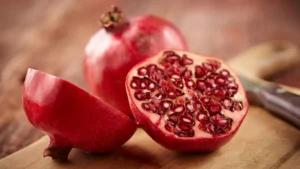






Leave your comment